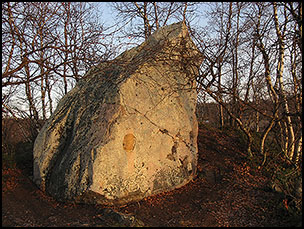Crossref Citations
This article has been cited by the following publications. This list is generated based on data provided by
Crossref.
Fjellström, Markus
Eriksson, Gunilla
Lidén, Kerstin
and
Svestad, Asgeir
2019.
Food and Cultural Traits in Coastal Northern Finnmark in the 14th–19th Centuries.
Norwegian Archaeological Review,
Vol. 52,
Issue. 1,
p.
20.
Spangen, Marte
and
Äikäs, Tiina
2020.
Sacred Nature. Diverging Use and Understanding of Old Sámi Offering Sites in Alta, Northern Norway.
Religions,
Vol. 11,
Issue. 7,
p.
317.
Pelletier, Maxime
Kotiaho, Antti
Niinimäki, Sirpa
and
Salmi, Anna-Kaisa
2020.
Identifying early stages of reindeer domestication in the archaeological record: a 3D morphological investigation on forelimb bones of modern populations from Fennoscandia.
Archaeological and Anthropological Sciences,
Vol. 12,
Issue. 8,
Salmi, Anna-Kaisa
Fjellström, Markus
Äikäs, Tiina
Spangen, Marte
Núñez, Milton
and
Lidén, Kerstin
2020.
Zooarchaeological and stable isotope evidence of Sámi reindeer offerings.
Journal of Archaeological Science: Reports,
Vol. 29,
Issue. ,
p.
102129.
Fonneland, Trude
and
Äikäs, Tiina
2020.
Introduction: The Making of Sámi Religion in Contemporary Society.
Religions,
Vol. 11,
Issue. 11,
p.
547.
Heino, Matti T.
Salmi, Anna-Kaisa
Äikäs, Tiina
Mannermaa, Kristiina
Kirkinen, Tuija
Sablin, Mikhail
Ruokonen, Minna
Núñez, Milton
Okkonen, Jari
Dalén, Love
and
Aspi, Jouni
2021.
Reindeer from Sámi offering sites document the replacement of wild reindeer genetic lineages by domestic ones in Northern Finland starting from 1400 to 1600 AD.
Journal of Archaeological Science: Reports,
Vol. 35,
Issue. ,
p.
102691.
Salmi, Anna-Kaisa
van den Berg, Mathilde
Niinimäki, Sirpa
and
Pelletier, Maxime
2021.
Earliest archaeological evidence for domesticated reindeer economy among the Sámi of Northeastern Fennoscandia AD 1300 onwards.
Journal of Anthropological Archaeology,
Vol. 62,
Issue. ,
p.
101303.
Pelletier, Maxime
Niinimäki, Sirpa
and
Salmi, Anna‐Kaisa
2021.
Influence of captivity and selection on limb long bone cross‐sectional morphology of reindeer.
Journal of Morphology,
Vol. 282,
Issue. 10,
p.
1533.
Salmi, Anna-Kaisa
and
Niinimäki, Sirpa
2021.
Archaeologies of Animal Movement. Animals on the Move.
p.
1.
Salmi, Anna-Kaisa
and
Niinimäki, Sirpa
2021.
Archaeologies of Animal Movement. Animals on the Move.
p.
45.
Abdul-Aziz, Nora
Fedak-Lengel, Daniella
and
Lengel, Lara Martin
2021.
Veg(etari)an Arguments in Culture, History, and Practice.
p.
25.
Salmi, Anna-Kaisa
and
Seitsonen, Oula
2022.
Domestication in Action.
p.
215.
Heino, Matti T.
and
Pelletier, Maxime
2022.
Domestication in Action.
p.
35.
Pelletier, Maxime
Kotiaho, Antti
Niinimäki, Sirpa
and
Salmi, Anna-Kaisa
2022.
Impact of selection and domestication on hindlimb bones of modern reindeer populations: Archaeological implications for early reindeer management by Sámi in Fennoscandia.
Historical Biology,
Vol. 34,
Issue. 5,
p.
802.
Salmi, Anna-Kaisa
Soppela, Päivi
Kynkäänniemi, Sanna-Mari
and
Wallén, Henri
2022.
Domestication in Action.
p.
249.
Salmi, Anna-Kaisa
Fjellström, Markus
Niinimäki, Sirpa
Soppela, Päivi
Kynkäänniemi, Sanna-Mari
and
Wallén, Henri
2022.
Domestication in Action.
p.
123.
Salmi, Anna-Kaisa
2022.
Domestication in Action.
p.
3.
Fonneland, Trude
and
Äikäs, Tiina
2023.
Shamanic Materialities in Nordic Climates.
Salmi, Anna-Kaisa
2023.
The Archaeology of Reindeer Domestication and Herding Practices in Northern Fennoscandia.
Journal of Archaeological Research,
Vol. 31,
Issue. 4,
p.
617.
Pelletier, Maxime
Discamps, Emmanuel
Bignon-Lau, Olivier
and
Salmi, Anna-Kaisa
2023.
Investigating the domestication and early management of reindeer (Rangifer tarandus) in the Sámi archaeological context from teeth geometric morphometrics.
Scientific Reports,
Vol. 13,
Issue. 1,



